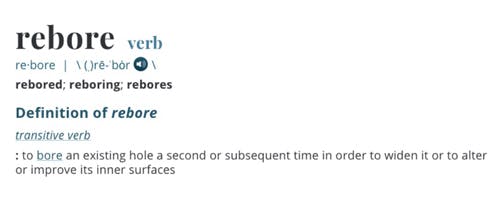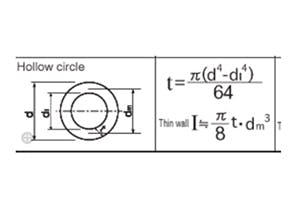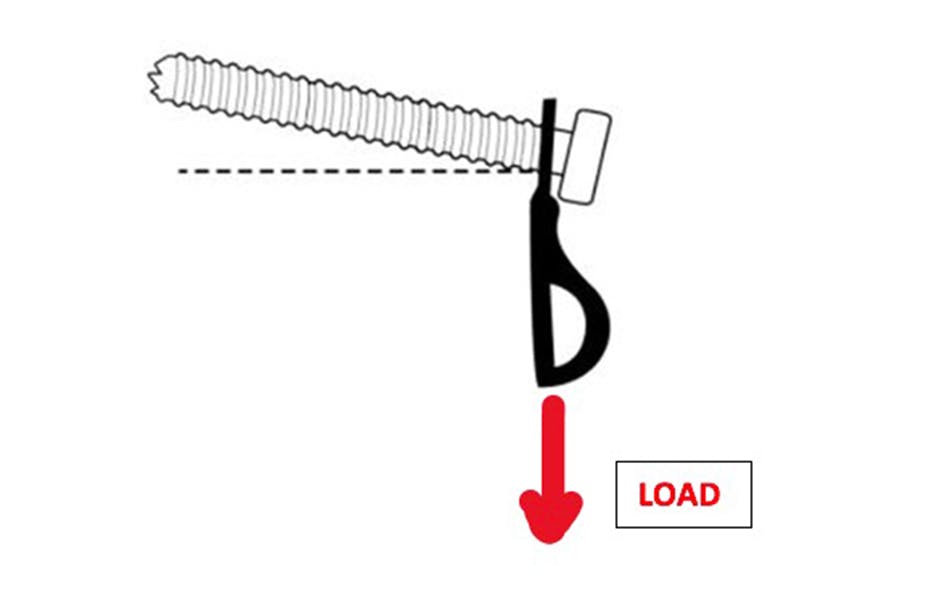
There are ice climbers who place ice screws in old ice screw holes, those who are against it, and those that do it only when absolutely necessary. I’m the latter. I’ve been climbing ice for over 25 years and have only used old ice screw holes twice. Once, just a few years ago because there was a thin-necked piece of ice on a popular route in the Canadian Rockies and it was absolute swiss cheese—I had no choice but to rebore one of the many existing holes and hope for the best. The other time, many years ago as a total neophyte ice climber, I was on a route that was too hard for me, pumped out of my mind and needed at least a psychological piece to keep questing upwards. I needed to use the absolute minimum amount of energy possible, so I quickly spun in a screw into a pre-existing hole and once again, hoped for the best. In both cases, it worked out as I ended up NOT taking a whipper. Would they have held? I hope so.
There has been lots of unofficial, and some official debate on whether rebored holes are as strong as new holes, or “strong enough.” A very in-depth study on this (and several other interesting topics) was done by Stephen Attaway and one of my colleagues—a guide, science wizard and ice climber buddy, Marc Beverly. If you want to geek out, check this:
Ice Climbing Anchor Strength: An In-Depth Analysis
Two key takeaways as it pertains to rebored holes are in their conclusions:
- 1) Based on the variability of anchor strength observed in our test results, we must accept the null hypothesis that rebored ice screws are too weak to withhold a UIAA fall factor ALL of the time. They are, however, stronger than expected and compare closely with an ice screw placed in virgin ice.
2) Rebored ice screws are nearly as strong as freshly drilled holes. It is likely that any refreezing process that decreases the diameter of the hole over time is of benefit for a rebored screw.
This is good info, but I don’t really want to go too deep into their results—you can read the paper—rather, I want to discuss a development in equipment that has taken place since this study was done: aluminum ice screws. This study was carried out in 2008, using various brands of steel ice screws, because that was what was available at the time. The same screws were re-drilled into pre-existing holes created by that brand of screw. However, since then, several companies have come out with aluminum ice screws.
DIFFERENT DIAMETER SCREWS
I don’t want to get into a physics and strength of materials lesson here because a) it’s complicated, and b) I learned this stuff 30 years ago in engineering school, so it’s been a while … But the short version is:
- - Steel is stronger than aluminum – got it.
- Aluminum is lighter than steel – check.
- When looking at cylinders or tubes, if you’re reducing the strength of the material (i.e. using aluminum instead of steel), you need to increase the diameter of the tube in order to maintain strength.


What exactly am I talking about? In order to meet necessary strength requirement—aluminum screws have a larger diameter than steel screws.
Some unofficial measurements of diameters (measured at the tip):
WHY DOES THIS MATTER?
The reason this matters is if you are using steel screws, and use an old hole that was made with a larger diameter screw (i.e. aluminum screw), you would very likely not obtain similar strengths as the study referenced above shows. In extreme cases, like placing a screw in a roof, it’s conceivable that the screw could just fall out!
Now thankfully, in most cases this is fairly obvious. A steel screw in an aluminum hole is quite wobbly—and hopefully you easily notice and question your placement. As well, even when inserting a steel screw into an old aluminum hole—it’s quite noticeable as there is little resistance.
TESTING
Ice screw testing is slow, and the results vary greatly. Hats off to Marc and Stephen for doing such an in-depth study in the paper referenced above. The work involved was substantial.
In the classic unofficial non-thesis sort of way—we headed into the QA lab to do a few quick tests to see if there was a noticeable difference in ultimate strength when using a dissimilar diameter rebored hole. This data has to be taken with a grain of salt because we’re talking about n=1 here. As in ONE data point. It’s basically statistically irrelevant, but it’s always kind of cool to break ice screws in ice.
It’s also worth noting that nowadays it’s fairly common knowledge to place screws at a positive angle (i.e. Non-leveraging). This was studied in-depth years ago by Chris Harmston at BD:
This is also referenced in Stephen and Marc’s paper:
It is well understood that placement of an ice screw, whether in dynamic shock loading or slow pull testing, produces the strongest results when NOT placed in a negative angle (i.e., using the screw in a levering configuration). So, from somewhere between 0° and +20° is the ideal angle, and that was our target range for testing rebored screws.

The reason I mention this is when looking at the videos of testing in the lab, the angle of placement appears to be opposite. That is because the direction of load in the machine is UP. Make sense?
Note: CE requirement for ice screw testing is 10kN
At the end of the day, screws need to meet 10kN to pass required CE testing, and in the tests above where we rebored using the same screw, the results exceeded 10kN. However, when we used a smaller diameter screw (steel screw) in a larger diameter hole (aluminum hole), it resulted in the placement being compromised and the screw pulling out at reduced loads. (significantly less than 10kN)
It is worth mentioning that this was in super good, lab made ice—it doesn’t get much better. The strength of most ice screw placements is directly related to the quality of the ice.
IN THE FIELD
As mentioned above, it’s pretty obvious when placing a steel screw into an aluminum hole, but it’s worth mentioning that in these examples, we’re doing it immediately one after the other. As in—no re-freeze time. We’re placing an aluminum screw, taking it out, and then putting a steel screw in right after.
It’s very likely that things wouldn’t be as obvious if you let the hole re-freeze a bit for a day or two, and then placed the steel screw.
CONCLUSIONS
Our one-data-point-of-each-test lab testing showed that placing the same diameter screw in the same hole, whether aluminum or steel, resulted in either the screw breaking or the placement failing at greater than 10kN, whereas, a smaller diameter steel screw in an aluminum hole resulted in the screw pulling out at significantly lower loads. (<10kN)
While placing the screws for these tests it was quite clear that placing a steel screw in a FRESH aluminum hole was obviously suspect and should be avoided. As holes are allowed to re-freeze slightly, it may become less obvious that there is a difference in diameters, increasing the risk of a suspect placement going unnoticed.
Intuitively, placing an aluminum screw (larger diameter screw) in an old steel screw hole (smaller diameter hole) is very likely similar in strength to placing it in fresh ice—though this wasn’t tested.
BOTTOM LINE
Know that lots of folks out there are now using aluminum ice screws and be aware of the likelihood and risks of reboring an aluminum screw hole with a smaller diameter steel screw.
Be safe out there and remember, when it comes to ice climbing, the leader shouldn’t fall.
KP
Featured Gear




